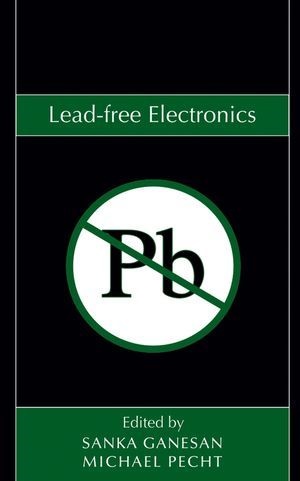Mehr lesen
Informationen zum Autor SANKA GANESAN , PHD, is Associate Research Scientist at the CALCE Electronic Products System Center, University of Maryland. His research interests include advanced materials and interfaces in electronics packages, sensors and MEMS, lead-free electronics, low temperature electronics, and intermittent failures in electronics systems. He has co-authored numerous publications in leading journals and conference proceedings. MICHAEL G. PECHT , PhD, is Chair Professor, Director, and the founder of the CALCE Electronic Products and Systems Center, University of Maryland. Dr. Pecht is currently Chief Editor of Microelectronics Reliability and has written sixteen books on electronic products development. He has consulted for over fifty major international electronics companies, providing expertise in strategic planning, design, test, IP, and risk assessment of electronic products and systems. Klappentext Lead-free Electronics provides guidance on the design and use of lead-free electronics as well as technical and legislative perspectives. All the complex challenges confronting the elec-tronics industry are skillfully addressed:* Complying with state legislation* Implementing the transition to lead-free electronics, including anticipating associated costs and potential supply chain issues* Understanding intellectual property issues in lead-free alloys and their applications, including licensing and infringement* Implementing cost effective manufacturing and testing* Reducing risks due to tin whiskers* Finding lead-free solutions in harsh environments such as in the automotive and telecommunications industries* Understanding the capabilities and limitations of conductive adhesives in lead-free interconnects* Devising solutions for lead-free, flip-chip interconnects in high-performance integrated circuit productsEach chapter is written by leading experts in the field and carefully edited to ensure a consistent approach. Readers will find all the latest information, including the most recent data on cyclic thermomechanical deformation properties of lead-free SnAgCu alloys and a comparison of the properties of standard Sn-Pb versus lead-free alloys, using the energy partitioning approach.With legislative and market pressure to eliminate the use of lead in electronics manufacturing, this timely publication is essential reading for all engineers and professionals in the electronics industry. Zusammenfassung Various social and environmental reasons drive the push to lead-free technologies. Proposed and enacted legislation in the form of international and national laws and standards and local initiatives seem to control the use of lead in electronics manufacture and waste minimization. Inhaltsverzeichnis Preface. Editors. Contributors. Acknowledgements. Chapter 1. Lead-Free Electronics: Overview. Chapter 2. Lead-Free Legislations, Exemptions & Compliance. Chapter 3. Lead-Free Alloys: Overview. Chapter 4. Lead-Free Manufacturing. Chapter 5. Review of Lead-Free Solder Joint Reliability. Chapter 6. Constitutive Properties and Durability of Selected Lead-Free Solders. Chapter 7. Interfacial Reactions and Performance of Lead-Free Solder Joints. Chapter 8. Conductive Adhesives. Chapter 9. Component-Level Issues in Lead-Free Electronics. Chapter 10. Tin Whiskers in Electronics. Chapter 11. Lead-Free Separable Contacts and Connectors. Chapter 12 Intellectural Property. Chapter 13. Costs to Lead-Free Migration. Chapter 14. Lead-Free Technologies in the Japanese Electronics Industry. Chapter 15. Guidelines for Implementing Lead-Free Electronics. Index. ...
Inhaltsverzeichnis
Preface.
Editors.
Contributors.
Acknowledgements.
Chapter 1. Lead-Free Electronics: Overview.
Chapter 2. Lead-Free Legislations, Exemptions & Compliance.
Chapter 3. Lead-Free Alloys: Overview.
Chapter 4. Lead-Free Manufacturing.
Chapter 5. Review of Lead-Free Solder Joint Reliability.
Chapter 6. Constitutive Properties and Durability of Selected Lead-Free Solders.
Chapter 7. Interfacial Reactions and Performance of Lead-Free Solder Joints.
Chapter 8. Conductive Adhesives.
Chapter 9. Component-Level Issues in Lead-Free Electronics.
Chapter 10. Tin Whiskers in Electronics.
Chapter 11. Lead-Free Separable Contacts and Connectors.
Chapter 12 Intellectural Property.
Chapter 13. Costs to Lead-Free Migration.
Chapter 14. Lead-Free Technologies in the Japanese Electronics Industry.
Chapter 15. Guidelines for Implementing Lead-Free Electronics.
Index.
Bericht
"If you buy only one book on Pb-free electronics to help you prepare for the Big Day, this compilation would be an excellent choice." ( Chip Scale Review , March 2006)

